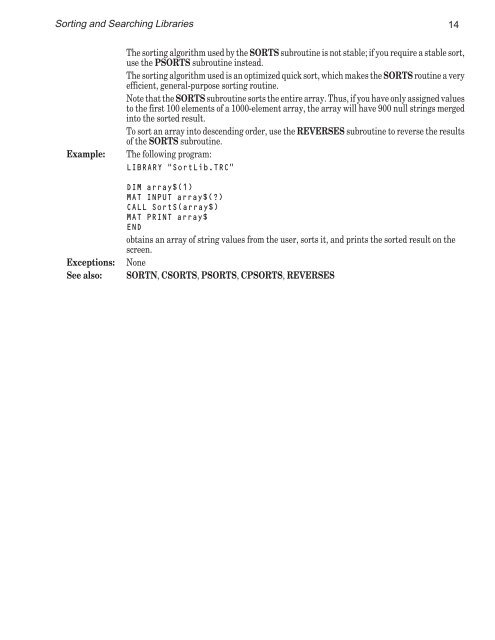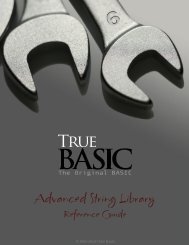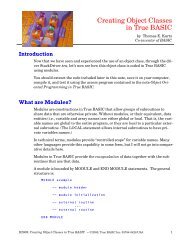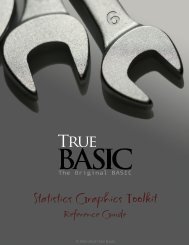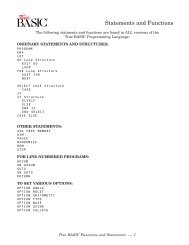Download the documentation - True BASIC
Download the documentation - True BASIC
Download the documentation - True BASIC
You also want an ePaper? Increase the reach of your titles
YUMPU automatically turns print PDFs into web optimized ePapers that Google loves.
Sorting and Searching Libraries 14<br />
Example:<br />
Exceptions:<br />
See also:<br />
The sorting algorithm used by <strong>the</strong> SORTS subroutine is not stable; if you require a stable sort,<br />
use <strong>the</strong> PSORTS subroutine instead.<br />
The sorting algorithm used is an optimized quick sort, which makes <strong>the</strong> SORTS routine a very<br />
efficient, general-purpose sorting routine.<br />
Note that <strong>the</strong> SORTS subroutine sorts <strong>the</strong> entire array. Thus, if you have only assigned values<br />
to <strong>the</strong> first 100 elements of a 1000-element array, <strong>the</strong> array will have 900 null strings merged<br />
into <strong>the</strong> sorted result.<br />
To sort an array into descending order, use <strong>the</strong> REVERSES subroutine to reverse <strong>the</strong> results<br />
of <strong>the</strong> SORTS subroutine.<br />
The following program:<br />
LIBRARY “SortLib.TRC”<br />
DIM array$(1)<br />
MAT INPUT array$(?)<br />
CALL SortS(array$)<br />
MAT PRINT array$<br />
END<br />
obtains an array of string values from <strong>the</strong> user, sorts it, and prints <strong>the</strong> sorted result on <strong>the</strong><br />
screen.<br />
None<br />
SORTN, CSORTS, PSORTS, CPSORTS, REVERSES


